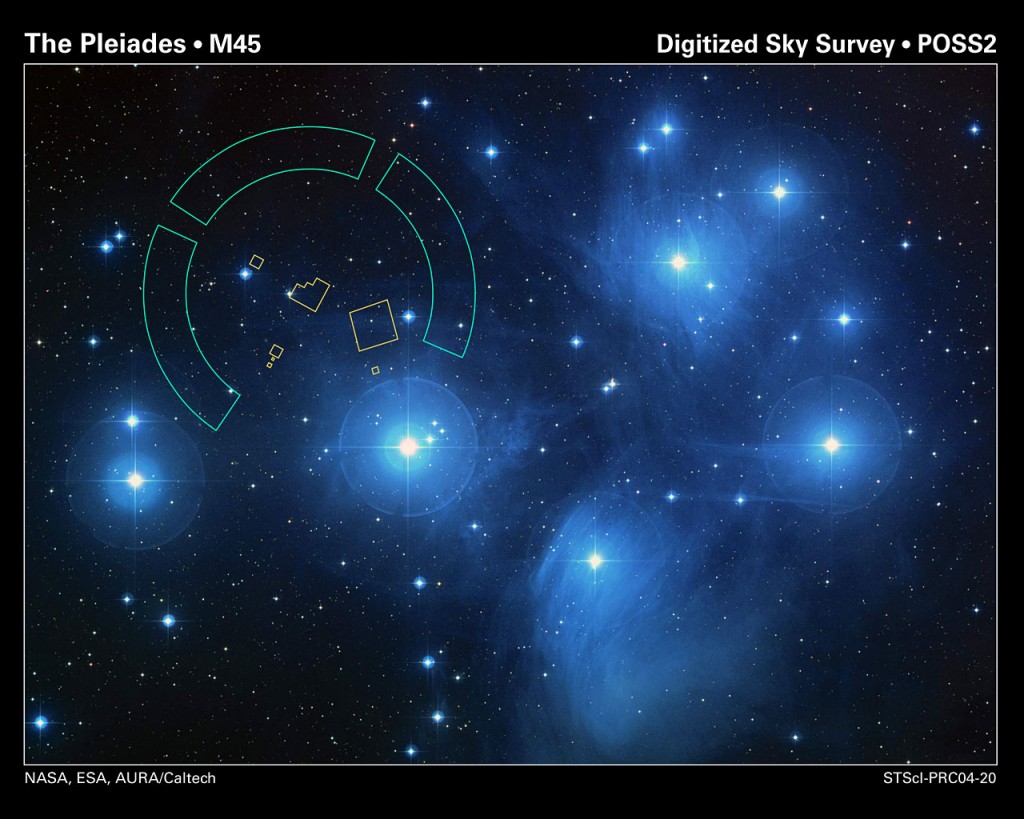As distances in space are well, astronomical, we can’t use measurements that we use here on Earth, such miles or kilometers. The Sun is 93 million miles away from the Earth, so that particular measure isn’t going to get us far. Also because space is three-dimensional, two-dimensional measurements aren’t really suitable. This is why we use angular measure, with degrees of angles.
If two stars are 20° away from each other this means that if imaginary lines connected your eyes with each star, an angle of 20° would be formed at your eyes by the two lines. If you hold arm out towards the sky with fist clenched, you are covering around 10° of the sky. The point directly overhead is the zenith, which forms a right angle (90°) with the horizon.
A degree is equal to 60 arcminutes, which each in turn consists of 60 arcseconds. This is important because there are real measurements in arcseconds such as the planets appearing at around 30 arcseconds as seen from Earth.
As we look up the night sky it appears as an enormous dome, suspended above us. But in fact it isn’t a dome, because it continues beneath our feet on the other side of Earth. In fact if the planet disappeared from under us, it would appear as though we were at the centre of an enormous star-studded sphere, which seems to revolve around Earth once a day, from east to west. Well, astronomers use this apparent celestial sphere to determine the relative positions of stars. There is also a grid system overlaid on the sphere with the “latitude” known as declination and “longitude” called right ascension. Together these are the celestial coordinates.
Declination is measured in degrees, arcminutes and arcseconds north or south of the celestial equator. North has a plus sign, south a minus sign. In contrast right ascension is in ordinary hours, minutes and seconds, from 0 to 24 hours, because of the 24-hour rotation period of the Earth. However a star’s celestial coordinates gradually alters over a number of years, because of precession, the slow change of the Earth’s orientation in space. This shouldn’t bother amateur astronomers much, but professionals have to take this into account.
A star’s brightness is measured in magnitude. Astronomers use a simple numerical scale, where the lower the number the brighter the star is. A star has an absolute magnitude, which is its true magnitude as viewed from a distance of 33 light-years. Its apparent magnitude is the brightness we see in the sky. The idea was that the brightest star has magnitude 1, while the dimmest we can see is magnitude 6. Anything over 6 we need telescopes or binoculars to see. Later it was discovered that there were brighter stars than magnitude 1, and so some stars and planets have negative magnitudes, such as Sirius magnitude –1.4, the full Moon –13, and the Sun –27.
There are a few measurements astronomers use for the vast distances in space. One astronomical unit is equal to the distance of the Earth from the Sun of 93 million miles or 150 million kilometers. A light-year is the distance light travels in one year, remembering that light travels at around 186,000 miles per second. Note that a light-year is a measure of distance not time. So one light-year is a very big distance, isn’t it? Well, yes and no. It’s very far for us who have gone no further than the Moon. But for the Universe one light-year is an extremely small distance. The nearest star to our Sun is Alpha Centauri at 4.3 light-years, and yet at our current maximum speed in space it would take us around 10,000 years to get there – that’s if we didn’t run out of fuel first. Andromeda, the nearest galaxy to our own Milky Way, is around 2.5 million light-years away, meaning that the light we see from it tonight left Andromeda, 2.5 million years ago!
Professional astronomers also use a parsec, which is equal to 3.26 light years, with a kiloparsec equal to 1,000 parsecs, and a megaparsec to one million parsecs.



